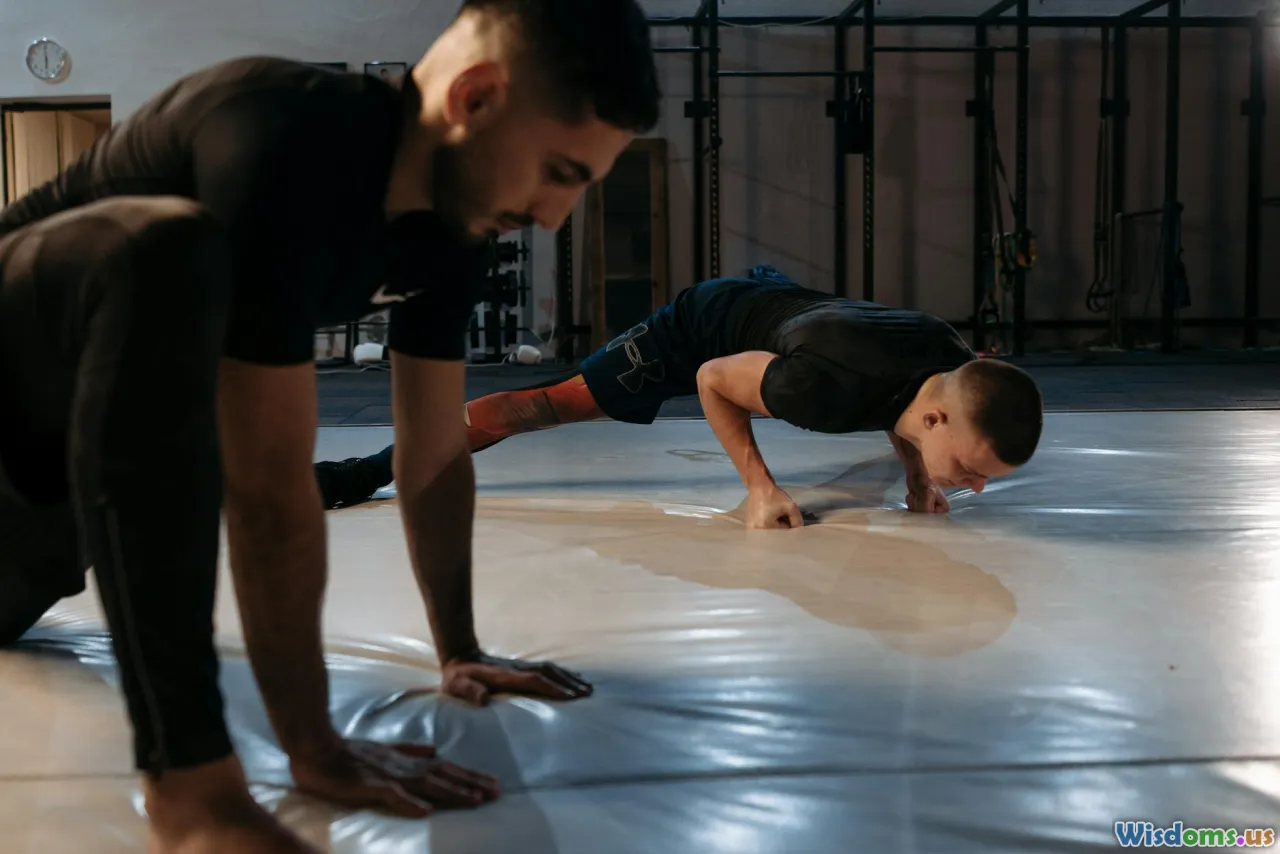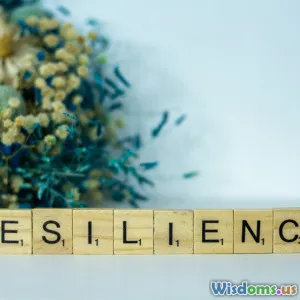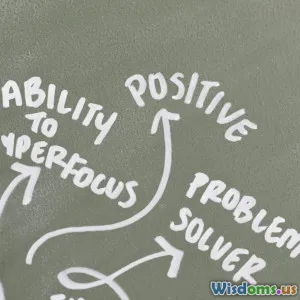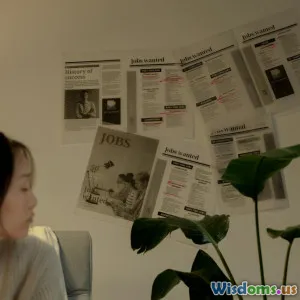
Is Perseverance More Important Than Talent in Success
36 min read Examine research and real-world examples to weigh perseverance versus talent, and learn how grit, practice, and strategy shape lasting success. (0 Reviews)
Some people breeze through early contests and exams, dazzling teachers and coaches with ease. Others plod, stumble, and keep showing up. Years later, the outcomes often flip. The slow starter becomes the steady winner; the wunderkind fades. So which matters more for success: perseverance or talent? The honest answer is not a slogan. It is a layered mix of evidence, domain realities, and choices you can make today.
This article walks through the research, the real tradeoffs, and a practical playbook. Along the way, you will see why perseverance is often the better lever to pull, how it multiplies whatever talent you have, and when raw ability and structural constraints still set the bounds. Most importantly, you will leave with concrete ways to build staying power without burning out.
What counts as talent, and what counts as perseverance

Talent is the cluster of advantages you begin with or develop unusually fast. Think of innate traits such as height or limb length for sports, pitch perception for music, spatial and verbal processing speed for academics, or reaction time in esports. Some of this is heritable. Some is early exposure that mimics talent because it gives you a head start and a feel for the domain before others even begin.
Perseverance is sustained, purposeful effort in the face of difficulty. It is showing up to practice every day, deliberately attacking weaknesses, and continuing after a failed exam, a broken prototype, or a rejection email. It is also strategic. Real perseverance is not mere stubbornness; it is persistence plus adaptation, guided by feedback.
A useful framing is this: talent is an initial condition with some slope. Perseverance is the time multiplier you apply to that slope. More hours at the right intensity moves the line higher, often bending it upward as you compound skills.
Example: two junior programmers enter the same team. One can read code quickly and has a sharp intuition for algorithms. The other struggles but journals every bug, asks for code reviews weekly, and studies one pattern per week. After a year, the second developer closes most of the intuition gap because each hour was directed at specific weaknesses and reinforced by feedback. The first developer still has quick pattern recognition, but the gap in error rate and architectural thinking narrows significantly.
What the research actually says

A few key findings help move the debate beyond anecdotes.
-
Grit and perseverance correlate with performance, but not infinitely. Work on grit led by Angela Duckworth finds that consistent, effortful pursuit of long term goals predicts outcomes from graduation to training completion. Meta analyses suggest small to moderate relationships with performance indicators. Importantly, the perseverance of effort component tends to be a stronger predictor than consistency of interests. In other words, sticking with hard work matters more than never changing topics.
-
Practice quality is pivotal, and quantity is not all powerful. Deliberate practice research inspired by K. Anders Ericsson shows that structured, feedback heavy training improves skill far more efficiently than mindless repetition. Later meta analyses by Brooke Macnamara and colleagues found that deliberate practice explains a substantial portion of performance variance in certain fields but not all. Roughly speaking, it can account for a sizable chunk in games and music, a meaningful slice in sports, and much less in some professional domains. This tells us that training matters, but ceilings and other factors remain.
-
Ability differences are real and partly heritable. Twin studies and large scale cognitive research suggest that traits such as working memory capacity, processing speed, and certain physical attributes vary and are influenced by genetics and early environment. These differences can set constraints or accelerators in specific domains. No amount of persistence will make a 160 cm athlete an elite center in professional basketball. Conversely, those constraints rarely determine your entire life trajectory, because most success is not at the far right tail of a single metric.
-
Mindset influences persistence and learning behavior. Growth mindset research led by Carol Dweck shows that believing abilities can be developed nudges learners to seek feedback, embrace challenges, and persist after setbacks. Effects vary by context and are not magic, but the practical behaviors that a growth mindset drives overlap strongly with effective perseverance: focusing on strategy and input rather than fixed identity.
Taken together, the evidence points toward a clear hierarchy: talent sets initial conditions and some constraints; deliberate, sustained effort moves you through the opportunity space; and context and structure decide how much that effort pays off.
The multiplier effect: how perseverance amplifies talent

The most compelling reason to prioritize perseverance is that it multiplies whatever talent you have. Multipliers appear in at least four ways.
-
Compounding through skill decomposition. Complex abilities are stacks of subskills. A musician refines tone production, phrasing, ear training, rhythm, and sight reading. After months of deliberate practice, gains in rhythm make ear training easier, which in turn accelerates tone control. This is compounding. The more you stick with it, the more the improvements feed each other.
-
Feedback density. If you practice for two hundreds of focused minutes daily, you generate more bouts of error, correction, and learning. Each loop closes faster when you show up consistently. The person who relies on early aptitude but practices in sporadic bursts may collect some wins, but the feedback frequency is too low to reshape their skills.
-
Reputation and opportunity drift. People who persist become reliable to collaborators. That reliability yields better mentors, tougher assignments, and richer feedback. Over a few years, the environment upgrades itself around persistent individuals. Talent can draw initial invitations; perseverance keeps the door open long enough to collect compounding advantages.
-
Emotional tolerance. Perseverance strengthens your capacity to face discomfort. You develop the ability to operate under pressure without shutting down. This tolerance is itself a transferable meta skill that keeps you in the game when stakes rise.
In short, perseverance does not only add hours. It changes the internal dynamics of learning and the external flow of opportunities. That is why it often outperforms raw talent over long horizons.
Domain matters: where talent outweighs perseverance, and where it does not

Saying perseverance always beats talent is misleading. Some domains are dominated by physical or cognitive ceilings. Others reward persistence much more.
-
Height and power constrained sports. In elite basketball, volleyball, and rowing, physical attributes such as height, limb length, and VO2 max impose clear bounds. Perseverance helps you reach your personal best and find a position that fits your attributes, but a five sigma outlier in height is not something effort can recreate. Practical response: choose roles that fit your profile, such as ball handling guards over power forwards, and channel perseverance into skill and decision speed.
-
Skill dense arts and crafts. Classical piano, violin, and ballet demand early and prolonged training. However, the discipline is rich in learnable subskills. Early start helps, but late starters who use high quality practice and coaching can reach professional levels in some cases. Here, deliberate practice plus perseverance has high leverage.
-
Knowledge and analytical professions. In software engineering, law, finance, medicine, and research, domain knowledge stacks quickly. Baseline cognitive ability and working memory help, yet the gaps can be narrowed by consistent study, spaced repetition, and deliberate project exposure. An early talent for abstraction is useful, but hours spent writing, debugging, and shipping code still dominate outcomes for most practitioners.
-
Entrepreneurship and sales. Market timing and network access matter, but persistence is often the deciding factor. Customer discovery, repeated iterations, and the social capital built by fulfilling promises over time turn efforts into better opportunities. Talent in storytelling helps; perseverance makes you show up to the twentieth customer interview after nineteen nos.
-
Creative writing and content. Gifted voice matters, yet the craft of structure, revision, and audience fit is built through drafts. Many commercial authors share a pattern of staggering number of rejections, rewrites, and steady volume. Here, perseverance is often the thin edge that pries open the first door.
The takeaway: align domains and roles with your talent profile, then apply perseverance to exploit the learnable space. Trying to bulldoze immutable constraints wastes time; ignoring the room for growth leaves returns untapped.
Case studies across fields

-
James Dyson reportedly built over five thousand vacuum prototypes across years before his cyclonic design reached market acceptance. The early idea was not enough. What won was the willingness to iterate materials, airflow geometry, seals, and manufacturing tolerances until the performance and reliability crossed the threshold.
-
Stephen King famously collected rejection slips on a nail hammered into the wall until the nail could not hold the weight. He continued to write and improve. When Carrie was accepted, it was the product of years of output, not a single stroke of fortune.
-
The Beatles played marathon sets in Hamburg clubs before worldwide fame. Those nights demanded endurance and variety, forcing them to broaden their repertoire, tighten transitions, and develop stage craft that records alone do not teach. By the time mass attention arrived, they were hardened, cohesive performers.
-
The Polgar sisters in chess grew up in a deliberate, practice rich environment engineered by their father, Laszlo Polgar. While the case is often used to argue that talent is overrated, it also shows the power of structured, long term training. The recipe was persistence multiplied by smart design: targeted drills, constant play against edges, and a culture that normalized effort.
-
Distance running in East Africa illustrates the interplay of attributes, culture, and perseverance. High altitude upbringing, lean body composition, and a culture of running intersect with dedicated training. Success is not solely innate; it is the product of compound exposure and relentless practice applied to a favorable base.
These cases share a pattern. Talent or context created a plausible path, but persistence and iteration carried the outcomes over the line.
The hidden third factor: opportunity and systems

Debates about talent and perseverance sometimes miss the scaffolding that makes effort effective: opportunity. Access to safe practice spaces, skilled coaches, tools, time, and social support often determines whether perseverance pays off.
-
A student who must work two jobs will have less time for deliberate practice than a peer with financial backing. The solution is not to preach grit but to help design schedules that protect small, consistent practice slots and to advocate for resources.
-
A junior analyst with a manager who reviews work weekly will progress faster than one who rarely receives feedback. System design can level up perseverance by increasing feedback density.
-
A software apprentice with access to modern tooling, code repositories, and deployment pipelines learns quicker than one locked into outdated systems. Tools that shorten the feedback loop are force multipliers for effort.
In practical terms, two actions matter: build or seek systems that amplify your persistence, and when you are in a position to help others, make opportunity more evenly distributed so that perseverance actually has somewhere to go.
How to build perseverance you can sustain

Perseverance is not a personality trait you either have or do not. It is a set of behaviors and supports you can engineer.
-
Use if then planning. Write implementation intentions that specify what you will do when obstacles arise. If I feel like stopping after two sets, I will complete one more set before deciding. If catastrophic failure happens in staging, I will file a postmortem template within one hour and schedule a review. This reduces decision fatigue in moments of stress.
-
Apply WOOP. Wish, Outcome, Obstacle, Plan. Define your wish and desired outcome. Then explicitly list the most likely obstacle and a plan for it. For example, Wish complete a portfolio project. Outcome a deployed app with users. Obstacle loss of momentum after first bug cluster. Plan schedule a fixed two hour window for triage on Mondays and a Friday demo to a friend.
-
Design friction. Make desired actions easier and undesired ones harder. Lay out your running shoes the night before. Block distracting sites during work blocks. Place your practice journal and metronome on the desk, not in a drawer.
-
Track effort, not only results. Mark a simple streak calendar for focused practice days. Keep the target modest at first, like 20 minutes of real work daily, then ratchet up. Streaks build identity as a persistent person and capture the input you control.
-
Build a perseverance social circle. Join a study group, a mastermind, or a training cohort that meets weekly. Human accountability changes the calculus on tough days.
-
Create tiny rest rituals. Persistence burns fuel. Use short recovery cues such as three deep breaths after finishing a block, a five minute walk outside, or a quick journal line on what went well. Micro recovery makes macro persistence possible.
-
Practice self compassion. Data shows that harsh self criticism often reduces future effort. Reframe setbacks as information. Ask what did I learn, what will I change, and what is the next smallest step.
Practice that counts: deliberate, feedback rich, and measurable

Not all perseverance is equally productive. Here is how to make effort count.
-
Set specific process goals. Replace get better at public speaking with perform three five minute talks to a camera this week, then review and refine one aspect vocal pace, gesture, or structure. Narrow focus accelerates learning.
-
Create a feedback loop every session. Musicians record practice and annotate timestamps for slips. Programmers write tests before refactors and review diffs with a peer. Writers run a read aloud pass to catch rhythm and clarity issues. The loop is try, observe, adjust.
-
Practice at the edge. Seek a difficulty that yields frequent small errors without total breakdown roughly the sweet spot where you fail 15 to 20 percent of the time. This ratio keeps learning signals high without crushing morale.
-
Use spacing and retrieval. Space sessions across days and force yourself to retrieve knowledge from memory before reviewing notes. These techniques strengthen long term retention better than cramming.
-
Measure input and output. Track minutes of focused practice and a small set of outcome metrics relevant to the subskill, such as words per day and readability scores for writing, bug rate for software, or tempo accuracy for music.
-
Run review cycles. Every week, write a brief report. What improved, what stalled, and what is the single adjustment for next week. Then execute it. This keeps perseverance from devolving into grinding without learning.
Concrete example schedule for a novice software engineer working on algorithmic thinking:
- Monday 45 minutes implementing one data structure from scratch, 15 minutes annotating mistakes.
- Wednesday 30 minutes on two medium difficulty problems with a five minute reflection after each.
- Friday one hour pair programming with a peer, then refactoring together and writing a test suite. Summary note posted in a shared doc.
This is perseverance with instrumentation. It compounds.
Smart perseverance vs stubbornness

Blind persistence can backfire. Distinguish between changing strategies and quitting goals, and plan for both.
-
Pre commit kill criteria. Before you begin, define conditions under which you will stop or pivot. For example, if after six months of daily practice and three public demos I still cannot land one paying client at a target price, I will pivot to a different market segment. Writing this in advance prevents sunk cost fallacy.
-
Separate identity from tactics. Do not attach your self worth to a single method. Attach it to the fact that you persist in testing methods.
-
Test small, then scale. Use cheap experiments to probe feasibility before heavy investment. For a business idea, run five cold calls and two landing pages before building a full product. For a research direction, draft a two page proposal and get feedback from two experts before committing a year.
-
Watch for negative unit economics of time. If the hours needed to maintain a path eliminate nutrition, sleep, or relationships, it is time to reframe. Smart perseverance preserves the engine that produces the effort.
-
Pivot from hard constraints, not from boredom. Tired of a plateau is not a reason to quit. Facing an immutable constraint you have verified with data is a reason to pivot to adjacent problems where your skills transfer.
Measuring progress without burning out

You cannot persevere indefinitely if your measurement system demoralizes you. Track progress in a way that sustains motivation.
-
Lead and lag measures. Lag measures are outcomes you want, like revenue or competition results. Lead measures are daily actions that predict lags, like number of outreach calls or minutes of deliberate practice. Focus most attention on leads; review lags weekly or monthly.
-
Rolling averages. Replace daily volatility with seven day rolling averages for practice minutes, sleep, and output. This smooths noise and reflects real behavior change.
-
Recovery metrics. Track sleep duration and quality, perceived exertion, and mood. For athletes, heart rate variability can be one indicator among many but should not be worshiped. Ultimately, if motivation craters and injuries creep in, you are overshooting.
-
The 85 percent rule for training intensity. Research in motor learning and athletics suggests that training slightly below maximum effort often yields better learning and lower error rates, leading to faster long term progress. Aim for sustainable intensity, not daily heroics.
-
Celebrate process milestones. If you hit 30 consecutive days of practice or ship four small projects, acknowledge it. Reward loops reinforce future persistence.
Comparing narratives: talent first, perseverance first, or balanced

Three stories dominate the conversation. Understanding them helps you choose wisely.
-
Talent first narrative. Assumes that innate differences largely determine outcomes and that effort is best spent finding domains where you hold structural advantages. Strengths of this view include efficient allocation of time and reduced frustration against immovable limits. Weaknesses include fatalism and underinvestment in learnable skills.
-
Perseverance first narrative. Assumes that most performance differences can be erased or overshadowed by effort and intelligent practice. Strengths include agency, resilience, and a focus on controllable inputs. Weaknesses include potential overreach into domains with hard ceilings and neglect of recovery and opportunity structures.
-
Balanced narrative. Recognizes that success is a product of talent fit, structured effort, and opportunity. This model asks you to pick arenas that suit your profile, then to grind smart, and to build systems around you that make the grind effective. It is less romantic but closer to how careers unfold.
In my view, the balanced narrative wins across time. For most people and most goals, perseverance is the more decisive factor because it is the one you can reliably turn up and because it compounds. But talent and context set the stage on which perseverance performs.
A practical decision tree for real life goals

Use this checklist to decide how to invest effort.
-
Clarify the goal and level. Are you aiming for top 1 percent, top 10 percent, or competent professional. The effort and constraints differ massively.
-
Assess your baseline honestly. Use objective tests where possible. For physical goals, measure height, reach, sprint times, VO2. For cognitive tasks, measure speed on relevant tasks and working memory proxies. For craft, get expert feedback on current work.
-
Identify domain constraints. Are there hard requirements that you cannot meet even with effort, such as height for a specific position, or an age window for elite gymnastics. If yes, choose a nearby role where constraints lighten.
-
Map the skill tree. Break the goal into subskills and identify which are most learnable and most impactful. Pick one to three for the next month.
-
Design a weekly cadence. Allocate fixed blocks for deliberate practice, feedback, and recovery. Protect these blocks with calendar holds.
-
Define lead measures and kill criteria. Decide on input targets and limits that trigger a pivot.
-
Build support systems. Line up a mentor, join a group, or set up a buddy check. Pre arrange tool access and learning materials.
-
Start small experiments. Run low cost tests to validate fit and progress before scaling effort.
-
Review and adjust monthly. Examine what moved, what stalled, and whether a re scope is necessary to match your time and energy budget.
-
Decide to double down, shift emphasis, or switch arena. Use data, not mood, to steer. If in doubt, iterate one more cycle with a sharper practice plan before quitting.
Common myths and how to replace them

-
Myth the 10,000 hour rule guarantees mastery. Reality the number was a rough average in a narrow context. Hours matter, but the distribution of practice quality is wide. Replace with track deliberate hours and feedback loops; focus on hours that change errors, not just hours on the clock.
-
Myth you either have talent or you do not. Reality many abilities are multi component. You might lack perfect pitch but excel at rhythm and harmonic analysis. Replace with find the subskills where you can build an edge, then compound them.
-
Myth perseverance is just grinding through pain. Reality sustained effort requires smart design and recovery. Replace with sustainable cadence and engineered habits that make showing up easier.
-
Myth never quit. Reality strategic quitting of dead ends frees resources for better fits. Replace with pre committed kill criteria and pivot plans.
-
Myth overnight success. Reality long invisible runways. Replace with normalize long ramp times and celebrate process milestones.
-
Myth passion must come first. Reality passion often follows competence and progress. Replace with do the work, track small wins, and notice interest growing as you get better.
Putting it all together: a playbook for the next 90 days

Here is a compact, actionable plan to tilt the scales toward perseverance driven success.
Week 0 setup
- Define one primary goal for 90 days. Make it specific and bounded deliver a working portfolio project, run a 10k without injury, write twelve publishable articles.
- Break it into three monthly sub goals and weekly process goals.
- List top three constraints and three resources. Constraints might be time, money, access. Resources might be a mentor, a gym membership, a helpful peer.
- Write a WOOP for your main goal and two if then plans for predictable obstacles.
- Choose a daily minimum commitment that is too small to skip 15 minutes of focused practice.
Weeks 1 to 4 foundation
- Execute daily minimum plus two focused blocks of 45 to 60 minutes per week.
- Schedule one feedback session per week. For writing, that might be a peer review. For fitness, a coach form check. For coding, a pull request review.
- Track lead measures in a simple log minutes practiced, sessions completed, feedback loops closed. Track one lag measure weekly words drafted, code merged, kilometers run.
- Protect sleep and nutrition. This is what makes perseverance sustainable.
Weeks 5 to 8 sharpening
- Increase focused blocks to three or four per week as recovery allows.
- Shift practice content toward your weakest subskills based on feedback. For example, if your writing drifts, practice outlines and transitions intentionally.
- Run one public demo or test. Publish an article, run a time trial, or present your project to two colleagues.
- Conduct a midcourse review. Ask what learned, what changed, and what next adjustment matters most.
Weeks 9 to 12 consolidation and result
- Maintain cadence, with small deloads if motivation dips.
- Target a tangible output by the end of week 12 a shipped feature, a small user base, an improved personal best.
- Write a short case study of your process. Document what worked, what did not, and your next plan. This narrative cements identity as a persistent, learning oriented person.
This 90 day structure is simple by design. It keeps you in motion, ensures feedback, and builds the identity of someone who persists. Adjust domain specifics, but keep the bones.
A final word on the original question
Is perseverance more important than talent in success. Across the messy reality of careers and creative work, perseverance usually has the edge because it is the variable you can control, it compounds over time, and it invites opportunities that talent alone does not secure. Talent still matters. It shapes your map and sets some boundaries. The wisest path is to choose arenas where your starting points are not liabilities, then apply perseverance so intelligently and consistently that your trajectory bends upward.
The people who quietly win over decades are rarely the ones who looked most gifted on day one. They are the ones who kept showing up, tuned their practice, built support systems, and made smart pivots. You can do the same. Pick your field, design your effort, and give perseverance the best possible chance to do its multiplying work.
Rate the Post
User Reviews
Popular Posts




















